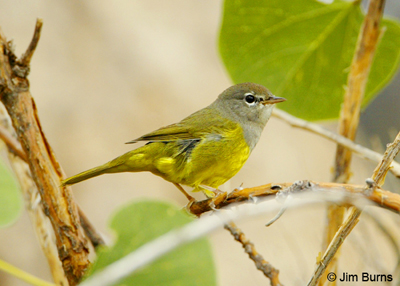
I first met Joan, an East Coast beginner, when she emailed and asked if I would take her out one morning on her first visit to the West since she had become interested in birding. As I hope everyone has experienced by now, it is both fun and rewarding to go out with beginners. They’re sponges for information and totally appreciative of any help. Joan and I had a great time and subsequently went out on two more occasions when she was in the Valley. This spring I read between the lines of an email from her which told me she was no longer a beginner. Her words will say it best.
I have gone on walks in Cape May during the warbler weeks, but I had begun to realize I needed more “time on bird” (her quote marks) than is available on a guided group experience. And if I were to bird on my own for a change, I would truly have to focus more intently to see and keep looking at these fast paced little guys who flit in and out of the emerging leaves.
I well remember, starting out, the feeling of being overwhelmed by spring migration, and the comfort and camaraderie I felt as part of a group with more practiced eyes, having things pointed out to me, being told what I was looking at and why. In fact, I had exactly the same experience just a few years ago when I became interested in odonata. Nonetheless, there is no learning experience quite like going out on your own, finding your own birds, and making head smacking mistakes no one else will ever know about.
Joan continues—I might have seen more warblers had I gone on the walks, but I wouldn’t have been able to recognize them “in my head” by now as I can these that I searched out and focused on myself. Altogether I saw and seemed to have learned nine warblers. If nothing else, this was a confidence building experience for my shrunken warbler ego! I could spend as long as I wanted to observing a bird’s appearance and behavior and it felt luxurious! Joan has a background in education, and I couldn’t have stated it any better. She’s no longer a beginner, and she knows exactly why.
We’ve all heard the term “confusing fall warblers,” when young of the year pass south, mostly looking like females and giving us no help with color patterns or song. It’s a great learning opportunity, and fall warbler migration is going on right now in Arizona. Check out mountaintops and ridgelines such as Mt. Ord and Pinal Peak. If you’re a beginner, get out there by yourself, bird at your own speed, stay on each bird until you figure it out, take notes, wear out your field guide. Next year you’ll be surprised how much you learned and how much you retained.